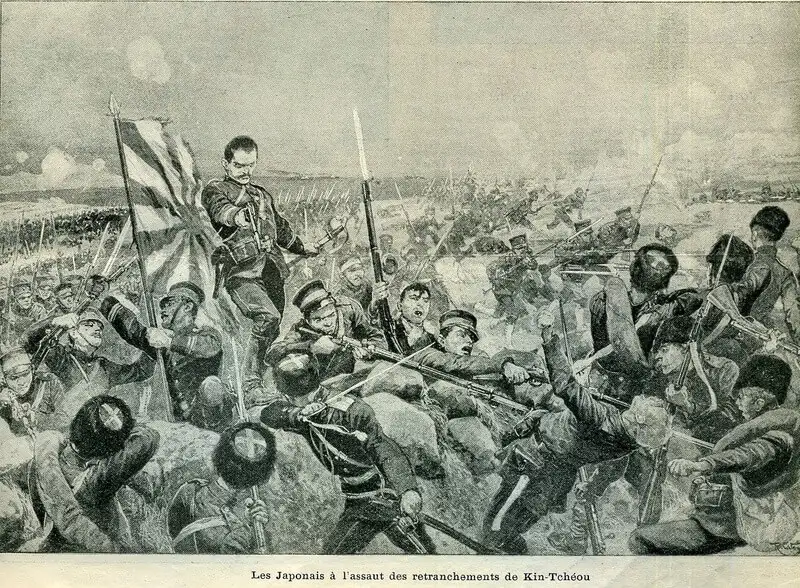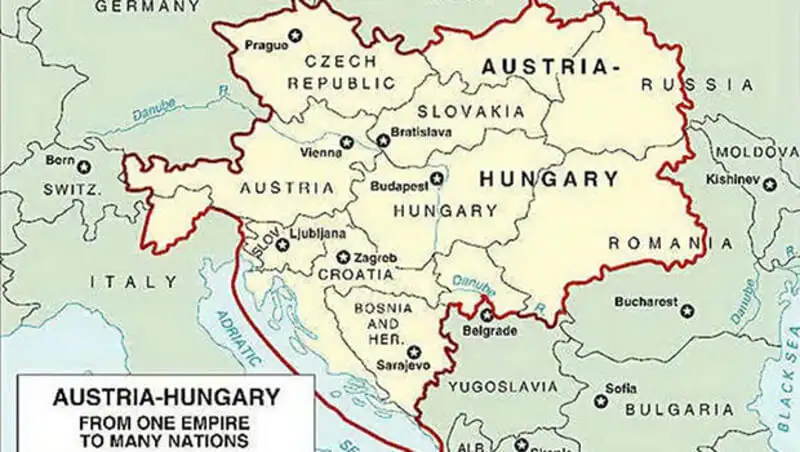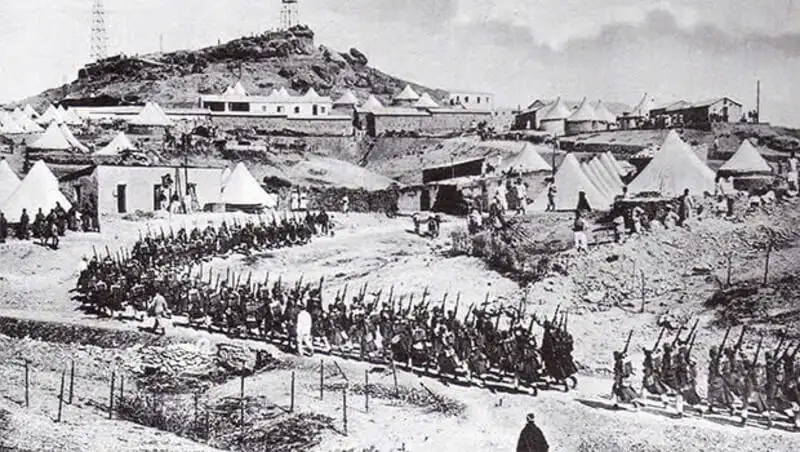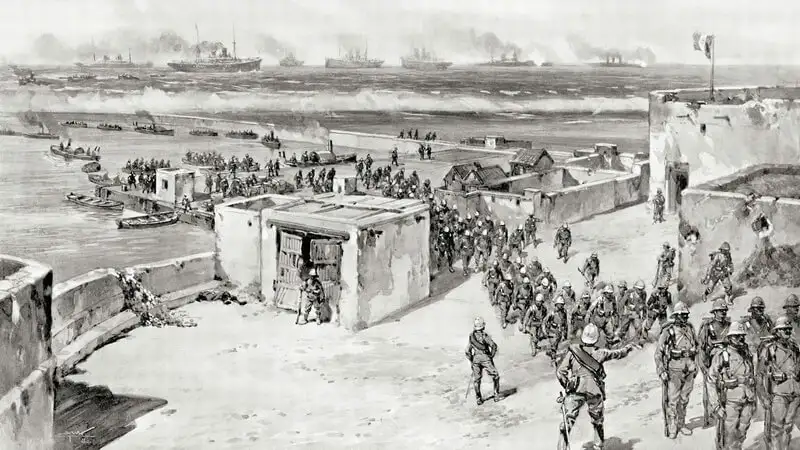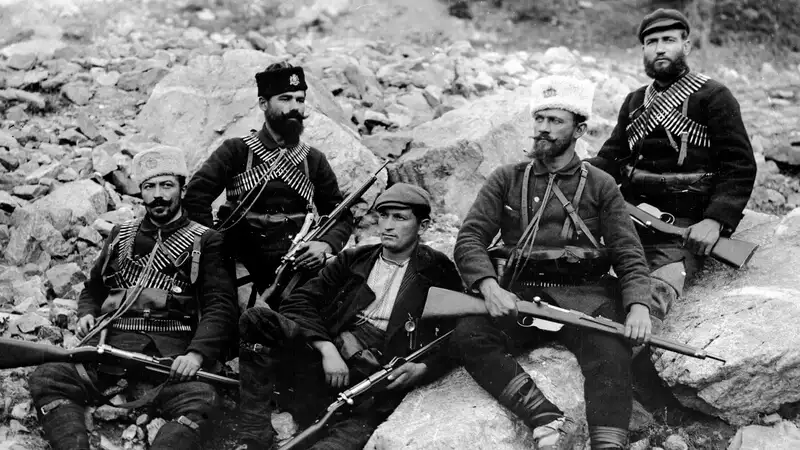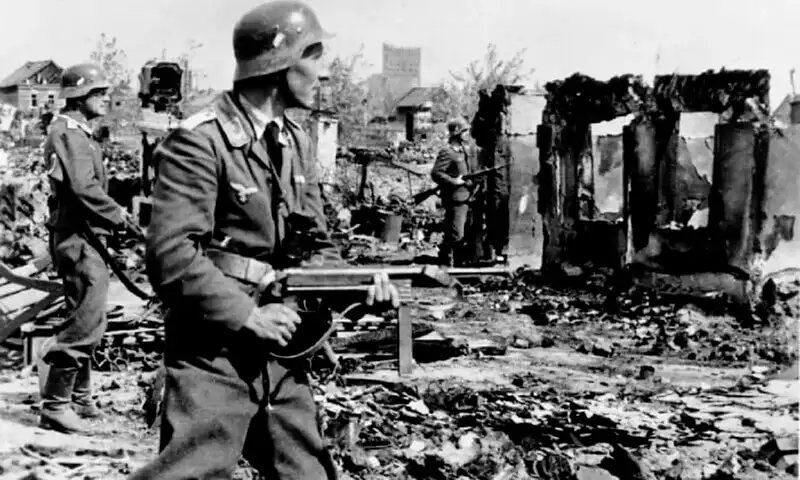World War I (1914-1918) laid bare the brutality of trench warfare and introduced devastating new technologies such as poison gas and tanks. The result was an unprecedented tragedy, with over 16 million soldiers and civilians losing their lives.
The war also reshaped the world map, leading to the collapse of three major empires—Austria-Hungary, Ottoman, and Russia—that had endured for centuries, and the emergence of new nations in their place. Though the war ended, political chaos and social upheaval persisted, ultimately setting the stage for an even more devastating global conflict two decades later.
The spark that ignited this conflict was the assassination of Archduke Franz Ferdinand of Austria-Hungary in 1914. However, historians argue that the causes of World War I were actually the culmination of a series of events stretching back to the late 19th century, marked by miscalculations and unforeseen consequences.
Below are the eight key events that led to the war.
Franco-Russian Alliance (1894)
Following its defeat in the Franco-Prussian War of 1870-71, both Russia and France grew wary of Germany’s rise, a nation that had already formed an alliance with Austria-Hungary and Italy. To safeguard themselves, Russia and France forged a partnership, marking the beginning of what would later become known as the Triple Entente during World War I.
Richard S. Fogarty, Associate Professor of History at the University of Albany, observes: “In my view, the formation of the Triple Entente—through the stages of the Franco-Russian Alliance of 1894, the Entente Cordiale between Britain and France in 1904, and the Anglo-Russian Agreement of 1907—solidified a diplomatic system that created the main opposing blocs in the war of 1914. This alliance system not only shaped the war but also helped trigger it, fostering expectations of international rivalry and defining the type of conflict Europeans imagined and prepared for.”

- The Franco-Russian Alliance, a critical step toward World War I. (Source: Collected)
First German Naval Law (1898)
Proposed by Admiral Alfred von Tirpitz, newly appointed Imperial German Navy Secretary, this law significantly expanded the size of Germany’s battle fleet. It was the first of five naval laws aimed at bolstering naval power, with the ambition of surpassing the British Royal Navy.
Eugene Berger, Associate Professor of History at DePaul University and author of World War I: A Historical Exploration of Literature, explains: “Tirpitz aimed to pressure Britain into aligning with Germany on German terms.” Instead, Britain responded by building more warships and abandoning its “splendid isolation” policy of the late 1880s to form alliances with Japan, France, and Russia.
According to Eugene Beiriger, “The German Naval Laws produced unintended consequences.” He notes that these laws alienated not only the British government but also the British public from Germany before the war broke out.
Russo-Japanese War (1904-1905)
Russian Tsar Nicholas II sought a strategic port to provide his fleet and merchant ships access to the Pacific, targeting the Korean Peninsula. Japan, however, viewed Russia’s growing influence as a threat and launched a surprise attack on the Russian fleet at Port Arthur in China. The ensuing war, fought on both sea and land in China, ended with Japan’s victory.
Eugene Beiriger argues that this victory shifted the balance of power in Europe. Russia’s allies, France and Britain—the latter also allied with Japan—signed a separate agreement in 1904 to avoid being drawn into the conflict. France later persuaded Russia to join an alliance with Britain, laying the groundwork for their relationship in World War I.
Moreover, Beiriger notes: “Russia’s eastward expansion was halted by Japan.” This redirected Russia’s ambitions westward, particularly toward the Balkans, and emboldened hardliners in the Russian government to take uncompromising stances in subsequent crises. Russia’s belligerence contributed to the outbreak of World War I less than a decade later.

- The Russo-Japanese War (1904-1905), a turning point in global power dynamics. (Source: Collected)
> You May Be Interested In: Why Did the U.S. Enter World War I, and What Were the Impacts?
Austro-Hungarian Annexation of Bosnia and Herzegovina (1908)
Under an 1878 treaty, Austria-Hungary had administered Bosnia and Herzegovina, though legally these provinces remained part of the Ottoman Empire. However, when Austria-Hungary formally annexed the territories, it provoked a fierce backlash. The Slavic population in the provinces aspired to form their own nation, while Slavs in Serbia sought to incorporate the territories into their own domain.
Doran Cart, Senior Curator at the National World War I Museum and Memorial, remarks: “In multiethnic empires, strong nationalist sentiments fueled resistance against distant rulers.” In the Balkans, tensions were a “powder keg” as Slavs, backed by Russia, opposed Austro-Hungarian rule.
Additionally, this annexation drew Russia, which saw itself as Serbia’s protector, into an escalating confrontation with Austria-Hungary.

- Austria-Hungary and the annexation of Bosnia and Herzegovina in 1908. (Source: Collected)
Second Moroccan Crisis (1911)
France and Germany had clashed for years over interests in Morocco, where German Emperor Wilhelm II intervened to pressure the Franco-British alliance. During the First Moroccan Crisis in 1905, Wilhelm II even visited Tangiers to publicly support Morocco’s sultan against French interests. However, Britain stood by France rather than yielding.
In the Second Moroccan Crisis of 1911, German Foreign Secretary Alfred von Kiderlen-Wächter sent a gunboat to anchor off Morocco’s coast in response to a rebellion Germany claimed was backed by France as a pretext to seize the country. Once again, Britain supported France, forcing Germany to recognize Morocco as a French protectorate.
These two crises tightened the bond between Britain and France while hastening an inevitable confrontation with Germany.

- Troops in Morocco during the Second Moroccan Crisis of 1911. (Source: Collected)
Italian Invasion of Libya (1911)
The modern Italian state, established only in 1861, had been “largely overlooked in the colonial race dominated by powers like Britain and France,” according to Richard Fogarty. The Italian government targeted Libya, a North African nation yet to be claimed by a Western European power, and decided to seize it from the Ottoman Empire.
The Italo-Ottoman War ended with a peace treaty, but the Ottoman military withdrew from Libya, allowing Italy to turn it into a colony. This conflict also marked the first military use of aerial bombing. However, as Fogarty points out, the real significance lay in exposing the Ottoman Empire’s weakness and its diminishing control over distant territories.
This became one of the factors leading to World War I, which Fogarty describes as “a war between empires: some expanding or seeking to expand, others struggling to maintain control, and still others desperately trying to hold onto what little remained.”

- Italian troops occupying Libya during the Italo-Ottoman War of 1911. (Source: Collected)
Balkan Wars (1912-1913)
Serbia, Bulgaria, Montenegro, and Greece—nations that had broken away from the Ottoman Empire in the 19th century—formed the Balkan League, supported by Russia, to seize remaining Ottoman territories in the Balkans.
In the First Balkan War (1912), Serbia, Greece, and Montenegro defeated Ottoman forces and forced them to sign an armistice. However, the Balkan League quickly disintegrated. In the Second Balkan War, Bulgaria fought Greece and Serbia over Macedonia, while the Ottoman Empire and Romania also joined against Bulgaria.
Bulgaria was ultimately defeated. The Balkan Wars further destabilized the region. The power vacuum left by the Ottomans heightened tensions between Serbia and Austria-Hungary, leading Austria-Hungary and its ally Germany to believe a war with Serbia was necessary to bolster Austria-Hungary’s position.
According to Richard Fogarty, “Many historians view the Balkan Wars as the true beginning of World War I.”

- Balkan fighters during the Balkan Wars (1912-1913). (Source: Collected)
Assassination of Archduke Franz Ferdinand (1914)
Archduke Franz Ferdinand, heir to the Austro-Hungarian throne, visited Sarajevo to inspect troops stationed in Bosnia and Herzegovina. He and his wife, Sophie, were shot dead in their car by Gavrilo Princip, a 19-year-old Serbian revolutionary.
Richard Fogarty notes that the assassination underscored the nationalist fervor tearing apart the Austro-Hungarian Empire. Serbian extremists targeted the archduke out of fear that he would push for a power-sharing deal to keep Slavs within the empire. “The assassination shattered that idea and thrust the confrontation between Serbia and Austria-Hungary into a more decisive phase,” Fogarty explains.
Tensions among Europe’s great powers escalated as they took sides in the crisis. Austria-Hungary, fearing Russian intervention on Serbia’s behalf, sought Germany’s support. Germany pledged assistance if Austria-Hungary resorted to force. This emboldened Austria-Hungary to declare war on Serbia on July 28.
Two days later, Russia mobilized its forces, prompting Germany to act to avoid a two-front war with Russia and France. Germany declared war on Russia on August 1 and on France on August 3. As German troops crossed neutral Belgium’s border to invade France, Belgium called for help, and Britain declared war on Germany on August 4.
World War I had officially begun.

- The assassination of Archduke Franz Ferdinand, the event that sparked World War I. (Source: Collected)
Conclusion
Through this overview of the causes of World War I, Pywar hopes to have clarified the chain of events that led to this global conflict. From political alliances like the Franco-Russian Alliance and the Moroccan Crises to the Balkan Wars and the assassination of Archduke Franz Ferdinand, these factors created irreconcilable tensions among the great powers, culminating in war. We hope this article provides a comprehensive perspective on the elements that shaped this historic conflict.
Translated by: Le Tuan
Source: history.com – 8 Events That Led to World War I



